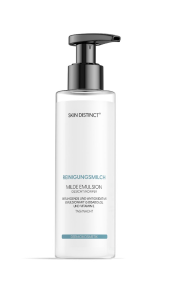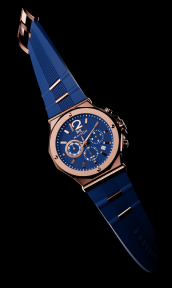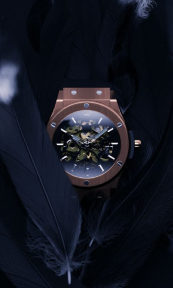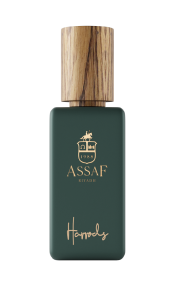Photography is a powerful medium that businesses utilize to showcase their products and services. Two key types commercial and advertising product photography, play distinct roles in marketing and branding efforts. While they may seem similar at first glance, they differ significantly in terms of style, intent, and techniques.
What is commercial and advertising photography?

Commercial photography is a broad category that encompasses any photography created to promote and sell a product, service, or brand. This type of photography is often highly technical and functional, with a strong focus on accurately representing the product. The images produced are used in contexts where clarity and detail are paramount, such as e-commerce websites, product catalogs, brochures, and packaging.
The goal is to provide potential customers with a clear and honest representation of the product, helping them make informed purchasing decisions. Commercial photography includes not just products but also corporate portraits, real estate photography, and even industrial photography, where the main objective is to showcase the subject matter effectively.
For example, a commercial photograph of a wristwatch might involve a high-resolution close-up shot that captures every intricate detail of the watch, such as the texture of the leather strap, the gleam of the metal case, and the precise alignment of the watch hands. The image will be clean, well-lit, and devoid of distracting elements, ensuring that the product is the sole focus.
Advertising Photography, while it falls under the umbrella of commercial photography, is more specialized and creative. This form of photography is used specifically to craft compelling visuals that support a larger marketing campaign. Unlike commercial photography, which focuses on accurately depicting a product, advertising photography is about creating an image that evokes emotion, tells a story, or powerfully communicates a brand’s message. The intent is not just to inform but to persuade and influence the audience, often by tapping into their aspirations, desires, or fears.
Advertising photography often involves elaborate setups, including models, props, and specific locations that align with the campaign’s theme. The lighting, composition, and post-production work are meticulously planned to achieve a particular mood or atmosphere. For instance, an advertising photo for the same wristwatch might feature a model wearing the watch while standing in an elegant setting, such as a sophisticated lounge or a luxury car.
The focus is not only on the watch itself but also on the lifestyle and status that the watch represents. This type of photography often appears in high-end magazines, billboards, social media ads, and other platforms where the brand aims to create a strong emotional connection with its audience.
Moreover, advertising photography can be highly conceptual. It may involve abstract or surreal elements that don’t just show the product but make a statement about the brand’s values or identity. For example, a perfume ad might not show the bottle but instead depict an evocative scene—a misty forest at dawn, with sunlight filtering through the trees—that captures the essence or mood the fragrance evokes.
In summary, while both commercial and advertising photography serve to promote products or services, they do so in fundamentally different ways. Commercial photography is about clarity, precision, and functionality, ensuring the product is accurately represented. Advertising photography, on the other hand, is about creativity, emotion, and narrative, aiming to connect with the audience on a deeper level and influence their perceptions of the brand.
The differences between commercial and advertising product photography: style, intent, and techniques

Understanding the differences in style, intent, and techniques between commercial and advertising photography is essential for crafting images that effectively serve their purpose. While both types of photography aim to promote products, they do so in distinct ways that reflect different goals and creative approaches. This section delves into how these differences manifest, from the aesthetic choices made in each type of photography to the underlying intentions and specific techniques employed to achieve the desired impact.
Style
Commercial Photography: The style in commercial photography is typically clean, straightforward, and focused on the product. The primary goal is to ensure that the product is the star of the image, with minimal distractions. This often involves using plain backgrounds, such as white or light gray, to allow the product to stand out clearly. The composition is usually centered and symmetrical, designed to provide a clear, unobstructed view of the product. The colors in the image are true to life, with careful attention paid to the product’s textures, materials, and fine details.
Consider a commercial photograph of a high-end laptop. The image would likely feature the item on a neutral background, with the screen angled slightly to show the clarity of the display. The lighting would be even, ensuring that the color of the laptop’s casing is accurately represented, and any branding or logos are visible.
Advertising Photography: In contrast, the style of advertising photography is much more varied and creative. It often involves complex compositions, bold colors, and dynamic lighting that contribute to a specific mood or theme. Advertising photography may incorporate elements such as models, props, and elaborate sets that go beyond merely showcasing the product to create an atmosphere or narrative. The style is driven by the campaign’s creative vision, which can range from minimalist and elegant to bold and edgy.
An advertising campaign for the same laptop might depict it being used by a young professional in a bustling coffee shop, with vibrant colors and dramatic lighting that highlight the energy and dynamism of modern work life. The focus might not just be on the laptop itself, but also on the lifestyle and productivity it represents, with the surroundings and other elements in the image helping to convey this message.
Intent
Commercial Photography: The primary intent of commercial photography is to inform and persuade through precision and clarity. The images are designed to provide potential customers with a detailed and accurate representation of the product, making it easier for them to make a purchase decision. The focus is on functionality—showing the product in a way that highlights its features, quality, and utility. The intent is often practical, ensuring the customers know exactly what they are buying.
For a commercial image of a smartphone, the photographer might capture several angles of the device, showcasing the screen, buttons, ports, and even a close-up of the camera lens. The intent is to inform the buyer of the phone’s design, build quality, and unique features that set it apart from competitors.
Advertising Photography: The intent in advertising photography goes beyond merely presenting the product—it’s about creating a connection between the product and the consumer’s emotions or aspirations. The aim is to influence and inspire the audience, often by tapping into deeper desires, such as the need for status, adventure, or belonging. Advertising photography seeks to create an association between the product and a certain lifestyle or identity, making the product more desirable by linking it to specific feelings or experiences.
An advertising campaign for the same smartphone might show it being used by an adventurer taking photos at the edge of a stunning mountain vista. The intent here is to associate the product with qualities like durability, innovation, and the spirit of exploration, appealing to consumers who identify with those values.
Techniques
Commercial Photography: Techniques in commercial photography are centered around accuracy and consistency. This often involves using controlled lighting setups, such as softboxes or diffusers, to minimize shadows and ensure even illumination. The camera settings are optimized for sharpness and depth of field, ensuring that the product is in focus from front to back.
Post-processing in commercial photography typically involves minimal retouching, focusing on color correction, sharpening, and minor adjustments to ensure the product is depicted as realistically as possible. The emphasis is on maintaining the product’s integrity and ensuring that what the consumer sees in the photograph is exactly what they will receive.
In a commercial shoot for sunglasses, the photographer might use a light tent to eliminate reflections and ensure that the lenses and frames are perfectly portrayed. The resulting image would be sharp, well-lit, and color-corrected to depict the product accurately.
Advertising Photography: The techniques used in advertising photography are more diverse and often experimental, aimed at creating a visually striking image that captures attention and evokes emotion. This can involve dramatic lighting, such as high contrast or backlighting, to create mood and depth. Techniques like motion blur, bokeh, or creative angles may add dynamism and interest to the composition.
Post-processing plays a significant role in advertising photography, with extensive retouching, color grading, and sometimes even compositing multiple images to create a final product that is both polished and visually compelling. The focus is on creativity and impact, often prioritizing artistic expression over strict realism.
An advertising photo of the same sunglasses might be taken at sunset on a beach, with the glasses perched on the edge of a surfboard. The photographer might use a shallow depth of field to blur the background, focusing attention on the sunglasses while also capturing the warm, golden tones of the setting sun. Post-processing might enhance the colors and add a subtle lens flare to heighten the dramatic effect.
In summary, commercial and advertising photography differ significantly in style, intent, and techniques. While commercial photography is about precision, clarity, and accurately representing the product, advertising photography is more about creativity, emotion, and storytelling. The former aims to inform and persuade through clear visuals, while the latter seeks to inspire and influence by creating a deeper connection between the product and the consumer. Both approaches are essential in marketing but serve distinct roles in how products are presented and perceived.
Legal and ethical considerations

Legal and ethical considerations are critical components of both commercial and advertising photography, ensuring that the creation and use of images are lawful but also responsible and respectful. This section explores the various legal requirements, such as intellectual property rights and truth in advertising, alongside ethical issues like truthful representation, cultural sensitivity, and the impact of image manipulation. Understanding these factors is essential for photographers and brands to protect themselves from legal risks and maintain public trust.
Legal considerations
Both commercial and advertising photography are subject to various legal requirements, which can vary depending on the jurisdiction, the nature of the product, and the platform where the images will be used. Understanding these legal considerations is crucial for photographers and businesses to avoid lawsuits, fines, or reputational damage.
Intellectual property rights: Photographers must ensure they have the legal rights to use any elements present in their images, such as trademarks, logos, or copyrighted materials. Unauthorized use of such elements can lead to infringement claims. This is especially important in advertising photography, where branded props, recognizable buildings, or even certain art pieces might be used to create a specific ambiance.
If an advertising photo for a beverage brand includes a well-known statue in the background, the photographer or the brand might need to obtain a license to use the image of that statue, especially if it is still under copyright protection.
Model releases: When using models in commercial or advertising photography, it is essential to obtain signed model release forms. This legal document grants the photographer and the client the right to use the images commercially. The absence of a model release can lead to legal disputes, especially if the images are used in ways the model did not agree to.
A model might agree to pose for a local store catalog, but without a clear model release, they could potentially object if the image is later used in a national advertising campaign, claiming they were not compensated for that broader usage.
Truth in advertising: Advertising photography is particularly bound by laws related to false advertising. Any claims made in an advertisement, including those implied by the visuals, must be truthful and not misleading. This includes accurate representation of the product’s appearance, function, and benefits. Exaggerated or deceptive images can lead to legal actions by regulatory bodies or consumer protection agencies.
If an ad campaign uses a heavily retouched image that makes a skincare product appear far more effective than it is, the company could face legal challenges for false advertising if consumers are misled by the images.
Privacy rights: In advertising photography, especially when shooting in public spaces or using images of individuals who are not professional models, privacy rights must be considered. In many places, using someone’s likeness for commercial purposes without their consent can result in legal action. This is particularly important in street photography or situations where individuals may not be aware they are being photographed for commercial use.
If a brand uses a candid shot of a person enjoying their product in a public park without obtaining permission, that person could potentially sue for invasion of privacy if they feel their likeness was exploited without their consent.
Ethical considerations
Beyond legal obligations, photographers and brands must navigate various ethical issues, particularly in how they represent products, people, and lifestyles. Ethical photography practices help maintain public trust and ensure that marketing efforts are responsible and respectful.
Truthfulness and accuracy: Ethically, commercial photography should represent products truthfully without exaggeration or deception. While some degree of enhancement or idealization is common, the final image should not mislead consumers about what they are purchasing. This ethical standard is vital to maintaining consumer trust and avoiding accusations of deceptive marketing.
A food photographer might enhance the appearance of a dish by adding certain elements or using non-edible substitutes to make the food look more appetizing, but it is unethical to represent these as part of the actual product the consumer will receive.
Cultural sensitivity: In both commercial and advertising photography, it is essential to be culturally sensitive and avoid perpetuating stereotypes or cultural appropriation. This means being aware of how different groups are represented in imagery and ensuring that depictions are respectful and inclusive.
An advertising campaign that features traditional clothing or cultural symbols should do so with respect and understanding, ensuring that the portrayal honors the culture rather than exploiting it for commercial gain.
Body image and representation: Advertising photography, in particular, plays a significant role in shaping societal standards of beauty and body image. Photographers and brands must consider the impact of their imagery on viewers, avoiding unrealistic portrayals that can contribute to negative self-image, especially among vulnerable groups like teenagers.
A fashion brand might choose to feature models of diverse body types, ages, and ethnicities in their advertising campaigns, promoting inclusivity and helping to counteract harmful industry standards that often prioritize one narrow definition of beauty.
Environmental impact: Ethical considerations also extend to the environmental impact of photography shoots. This includes being mindful of how location shoots might affect local ecosystems, reducing waste, and choosing sustainable practices whenever possible.
An outdoor advertising shoot should take care not to damage the natural surroundings, such as leaving behind litter or disrupting wildlife habitats, and should consider using eco-friendly materials and methods throughout the production process.
Manipulation and consent: In post-production, the ethical line can sometimes blur when it comes to manipulating images. While some retouching is standard, excessive manipulation that significantly alters the reality of the subject can be ethically questionable, especially if it involves altering the appearance of individuals without their consent.
If a photographer significantly alters a model’s appearance—such as changing body shape or facial features—it is crucial to ensure that this is done with the model’s consent and that the final image does not promote unrealistic beauty standards or deceive the audience.
In conclusion, legal and ethical considerations in commercial and advertising photography are complex but essential for responsible practice. Legal concerns like intellectual property rights, model releases, and truth in advertising ensure that photographers and brands operate within the law, while ethical considerations like truthful representation, cultural sensitivity, and responsible image manipulation help maintain public trust and promote positive social values. By adhering to these principles, photographers, and businesses can create compelling images that not only sell products but also uphold integrity and respect for their audience.
Tips for effective commercial and advertising photography

Creating compelling imagery in both commercial and advertising photography requires a deep understanding of the product, brand, and audience, as well as technical proficiency and creative vision. Here are detailed tips for excelling in both types of photography:
Tips for effective commercial photography
Understand the product inside and out
Before you start shooting, take the time to thoroughly understand the product you are photographing. This means not only knowing its features and functions but also understanding its unique selling points and how it fits into the market. Knowing these details will help you highlight what makes the product stand out.
For instance, if you’re photographing a smartwatch, familiarize yourself with its special features, such as fitness tracking or water resistance, and consider how to visually emphasize these aspects in your shots.
Use consistent and controlled lighting
Consistency is key in commercial photography, especially when shooting products for catalogs or e-commerce platforms where images need to match. Use controlled lighting setups, like softboxes or light tents, to ensure that every detail of the product is evenly illuminated and there are no harsh shadows or reflections.
For example, when photographing jewelry, use diffused lighting to minimize reflections and highlight the sparkle and clarity of the gems.
Pay attention to detail and accuracy
The goal of commercial photography is to represent the product as accurately as possible. Ensure that the colors are true to life and that textures, finishes, and materials are visible. Use a macro lens for close-up shots to capture fine details, like stitching on a handbag or the grain of a wooden table.
Take the following scenario as an example: when photographing clothing, ensure that the fabric’s texture is visible and that the color in the photo matches the actual product, avoiding any post-processing that might alter these details.
Use multiple angles and close-ups
Offering multiple perspectives of a product can provide potential buyers with a more comprehensive view, helping them to better understand the product. This might include shots from different angles, detailed close-ups, and images that showcase the product’s functionality.
For instance, for a kitchen appliance, you might shoot it from the front, side, and top, along with close-ups of the control panel, interior, and any unique features like interchangeable parts.
Choose simple and relevant backgrounds
In commercial photography, the focus should be on the product, not the background. Use clean, simple backgrounds that complement the product without distracting from it. A white or neutral background is often ideal, but sometimes a subtle gradient or a background that matches the brand’s color palette can add depth without drawing attention away from the product.
Consider the following scenario: when photographing a luxury watch, using a white or black background can keep the focus on the timepiece, while a light gradient might add sophistication without overshadowing the product.
Tips for effective advertising photography
Align with the brand identity and campaign goals
Understanding the brand’s identity and the objectives of the campaign is crucial in advertising photography. The images you create should not only showcase the product but also align with the brand’s voice, values, and the message they want to convey. This alignment helps in creating images that resonate with the target audience and reinforce the brand’s image.
For example, if you’re shooting for a luxury brand, the imagery should reflect elegance and exclusivity, perhaps through sophisticated settings, moody lighting, and a focus on fine details.
Tell a story through visuals
Advertising photography is about more than just showing a product—it’s about telling a story that engages the audience. Think about the narrative you want to convey and how the product fits into that story. This could involve creating a specific scene, using models to demonstrate the product in action, or suggesting a particular lifestyle or emotion that the product embodies.
For instance, for an outdoor adventure brand, you might tell a story of exploration by photographing a model using the product in a rugged, natural environment, conveying a sense of adventure and freedom.
Experiment with creative lighting and composition
Unlike commercial photography, where the goal is to evenly light the product, advertising photography allows for more creativity in lighting and composition. Use dramatic lighting, shadows, and unconventional angles to create a mood or highlight specific aspects of the product. Play with composition to guide the viewer’s eye to the most important parts of the image.
Take the next scenario as an example: in a campaign for a perfume, you might use backlighting to create a halo effect around the bottle, combined with a low-angle shot to give the product a sense of grandeur and allure.
Incorporate movement and emotion
Adding a sense of movement or capturing emotion can make advertising photos more dynamic and engaging. This could be literal movement—like a model in motion—or the suggestion of movement through creative blurring techniques. Emotion, whether through the expressions of models or the overall tone of the image, can help connect the audience to the product on a deeper level.
Consider the following situation: for a sportswear brand, capturing an athlete in mid-action, with sweat flying and muscles tense, conveys not just the product but the intensity and passion of the sport.
Collaborate with a creative team
Advertising photography often involves collaboration with a larger creative team, including art directors, stylists, makeup artists, and graphic designers. Working closely with these professionals ensures that the imagery fits seamlessly into the overall campaign and meets the creative vision. Communication is key to making sure that everyone’s contributions enhance the final product.
For example, on a fashion shoot, collaborating with a stylist and makeup artist can help ensure that the model’s look complements the clothing, while the art director might guide the overall mood and composition to ensure it aligns with the campaign’s theme.
Emphasize post-production and finishing touches
In advertising photography, post-production is often where the final magic happens. This is where you can enhance colors, add effects, and ensure that the image perfectly aligns with the campaign’s aesthetic. However, it’s important to maintain a balance—while creative retouching can elevate an image, it should still feel authentic and not overly manipulated.
For instance, after a shoot for a tech gadget, post-production might involve color grading to match the brand’s palette, adding subtle reflections to make the product pop, and fine-tuning the lighting effects to enhance the mood.
Both commercial and advertising photography require a blend of technical skill and creative insight, but they serve different purposes and therefore require different approaches. Commercial photography is about precision, consistency, and clarity, ensuring that products are represented most accurately and appealingly. Advertising photography, on the other hand, is about creativity, storytelling, and emotional connection, designed to make a lasting impact on the audience and align with broader campaign goals. By following these tips, photographers can excel in both fields, creating images that not only capture attention but also effectively communicate the intended message.
Wrapping up
Commercial and advertising photography, while related, serve different purposes and require distinct approaches. Commercial photography is focused on clarity, accuracy, and presenting the product in its best light, making it ideal for catalogs and e-commerce. Advertising photography, however, seeks to create a strong emotional connection and is often used in campaigns that aim to build brand awareness and desire. Both types require a deep understanding of the product, brand, and target audience, and when executed well, they can significantly enhance a business’s marketing efforts.
FAQ
What is the main difference between commercial and advertising photography?
Commercial photography focuses on accurately representing products for sale, often used in catalogs or e-commerce, while advertising photography is more creative and aims to tell a story or evoke emotions to support a larger marketing campaign.
Why is understanding the product important in commercial photography?
Understanding the product helps photographers highlight its unique features and selling points, ensuring that the final images effectively showcase the product’s value to potential buyers.
What are some common legal considerations in commercial and advertising photography?
Key legal considerations include obtaining model releases, respecting intellectual property rights, ensuring truthful representation in advertising, and protecting individuals’ privacy rights.
How can photographers make their advertising images more impactful?
Photographers can enhance advertising images by aligning with the brand’s identity, telling a compelling story, using creative lighting and composition, and collaborating with a creative team to achieve the desired mood and message.
What role does post-production play in advertising photography?
Post-production is crucial in advertising photography for refining the image, enhancing colors, adding effects, and ensuring that the final image aligns with the campaign’s aesthetic and emotional goals.
How can commercial photographers ensure consistency across multiple product images?
Consistency can be achieved by using controlled lighting setups, simple backgrounds, and standardized shooting angles, which ensure that all images match in terms of lighting, color, and style.
What ethical considerations should photographers keep in mind during shoots?
Photographers should focus on truthful representation, cultural sensitivity, accurate portrayal of body image, and minimizing environmental impact, ensuring that their work is both responsible and respectful.


























